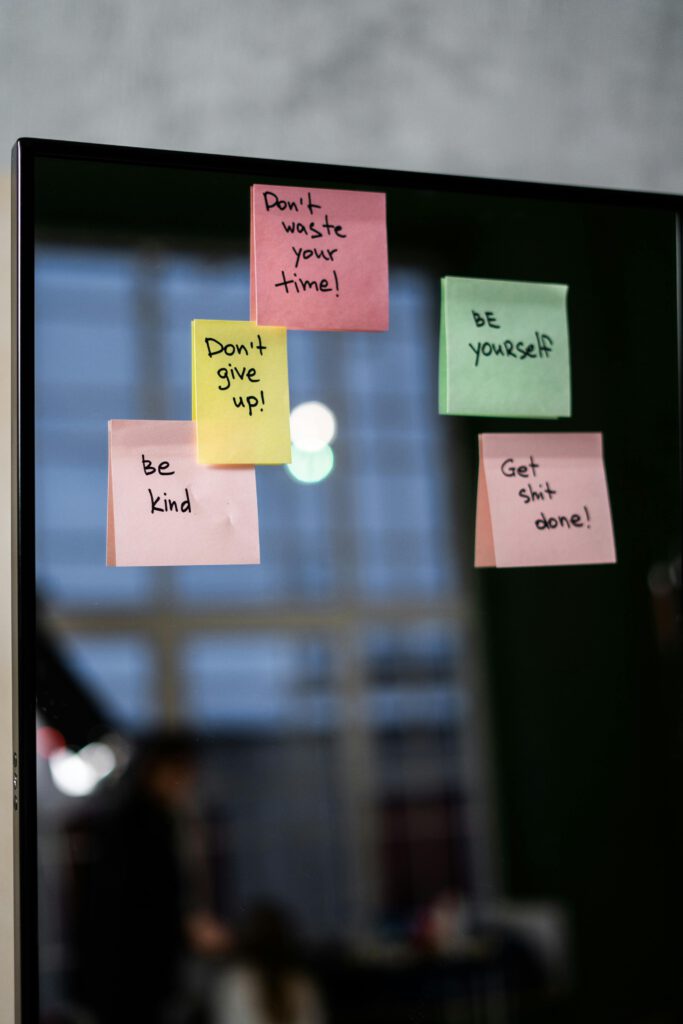MomBalm
Meaningful Moments Amid the Mayhem

Journal
How to Use Journaling for Self-Growth and Inner Calm
Support systems can feel hard to come by these days. For a long time, I wondered if maybe I just wasn’t an easy person to connect with, or if people were too wrapped up in themselves to invest in real friendships. But over time, I’ve shifted to a more compassionate perspective. I’ve realized that while I do come with my own challenges, everyone else is dealing with their own struggles too. It’s not that people don’t care; sometimes they’re just overwhelmed by their own worries, and that makes it harder for them to show up for others.
Journaling is a powerful way to become your own counselor. It helps you step outside yourself and gain perspective, almost like seeing yourself through someone else’s eyes. It’s also a valuable tool for tracking your growth and spotting areas where you might still feel stuck. Personally, I prefer digital journaling because I type faster than I write, and time is always in short supply. But I’m not knocking pen and paper—there’s real value in physically writing things down. In fact, many people find they connect more deeply with their thoughts when they put pen to paper. For me, though, it’s about being realistic with the time I have and choosing what will bring the most meaning to my day, especially when it comes to spending quality time with my family.
I don’t make journaling a daily practice unless things are particularly tough, but I try to do it once a week—even if it’s just a quick note about where I’m at. It’s a great way to track progress. I don’t follow any set method; I just do whatever feels right in the moment.
I keep separate journals for different purposes, all password-protected so I never have to worry about my daughter stumbling into my vents. It’s like a high-tech diary I always have on hand.
You can’t scroll for more than a few minutes without finding some therapy or mindfulness journal that claims it’s the key to transforming your life. (Or maybe that’s just my algorithms.) I don’t buy into the idea that there’s one right way to do anything. That’s just a sales tactic or someone pushing what worked for them as the “only way.” I’ll share what works for me, not because it’s the way, but because it’s a way—and it might be for you. If you’re looking for ideas, it’s worth a try.
At the end of the day, whatever helps you find a little more calm in the chaos is your way. The journey isn’t about perfection or even constant progress—it’s about consistently showing up for yourself, even when life feels overwhelming. So, take what works for you, leave the rest, and remember: it’s not about doing it all, but about finding what helps you feel more connected to yourself along the way.
“Sometimes all you need is permission to feel. Sometimes, what causes the most pain is actually the attempt to resist feeling, or the shame that grows up like thorns around it.”
— The Lonely City: Adventures in the Art of Being Alone by Olivia Laing (*affiliate link*)
(If you’re a reader, this one’s worth a look. It didn’t make my recommendations list because it touches on some pretty controversial topics, and it’s not exactly mindful. But it’s definitely contemplative, offering unique insights into loneliness and how it affects people differently—plus, there’s some great art in it too.)

Journaling Styles
Tip: It’s always a good idea to jot down the date with your entries. That way, when you look back, you can get a better sense of how things have been over time
Between stimulus (what happens to us) and response (what we do about it), is a space to choose. What we do with that space ultimately determines our growth and happiness.
—Viktor Frankl

Vent Journal
Have you ever blown up at your partner or gone on a rant to a friend, only to wish you hadn’t shown such an ugly side later? We all need to vent, but dumping all those intense, messy emotions on someone else’s shoulders isn’t always fair.
If you’re feeling angry, resentful, or especially judgmental, journaling is a great way to release those emotions without passing them on to someone else. Go ahead—complain as much as you want about whatever’s bothering you, whether it’s a person, a situation, or even your pet! (We’ve all had those days.) If you feel like giving someone a piece of your mind, do it in writing instead of face-to-face. You’ll get the relief of venting without the regret of consequences later.
Once you’ve cooled off, go back and read what you wrote. Most of the time, you’ll cringe at how much power you gave that person or situation over your emotions. It’s an eye-opener, and helps you regain perspective. This kind of journaling lets you step back, see things more clearly, and even figure out a better way to communicate if you feel you still need to address the issue once you’ve cooled down..

Self-Pity vs. Self-Compassion
This one is a game-changer for anyone dealing with shame. A lot of times, when we’re hard on ourselves, we end up being hard on others too. If you struggle to show compassion to others, it’s probably because you haven’t been very compassionate with yourself. You might tell yourself to stop whining, get it together, or keep pushing through. Eventually, you burn out, and that inner bully turns into a voice of self-pity, convincing you the world’s against you and no one cares. It’s not true, but it sure feels that way when you’ve been neglecting your own feelings.
How we talk to ourselves directly affects how we treat others. Being kind to yourself isn’t selfish; it’s the kindest thing you can do for the people around you. It makes it easier to access empathy and patience in tough situations.
Starting a “Self-Pity vs. Self-Compassion” journal is like becoming your own best friend and counselor. When you notice you’re being too hard on yourself or spiraling into self-pity, give yourself permission to write it all down. Be as whiny, frustrated, or bitter as you need to be in the moment—this is your space to let it out. Once you’ve vented, follow it up with a self-compassion entry, where you gently reframe the situation from a kinder perspective. (It helps to walk away and come back when you’re feeling less reactive for the compassionate entry.) Think of it as how a good friend might offer you a more grounded, understanding view when you need it most.
This practice doesn’t just help you feel better; it strengthens the way you relate to yourself and others. You’ll find it becomes easier to be patient with your own struggles and to approach difficult moments with a sense of grace.
Here’s what it might look like:
Self-Pity:
“Why does everything feel like such a battle? I can never catch a break, and nothing ever goes my way. I’m just so tired of trying so hard and getting nowhere.”
Self-Compassion:
“It’s completely normal to feel drained when life feels like an uphill climb. It’s hard to feel like your efforts are unnoticed or unappreciated, but that doesn’t mean they don’t matter. This is a long game, and the key is staying true to your values and showing up for yourself, even when it feels thankless. Take pride in your persistence. Your efforts will make a difference in the long run. It’s okay to feel tired and discouraged—it’s also okay to rest when you need to, in order to come back stronger for the next day.”

Creativity Journal/Lists
Do you ever feel like your brain is swarming with too many ideas, and you’re trying to juggle them all at once because they’re all important? Getting them out and organized can be a relief.
I love this quote from Warren Beatty about how he decides when to make a movie: “I compare making a movie to vomiting. I don’t like to vomit. It builds up and it builds up until something happens and I think, ‘Maybe I’ll just feel better if I throw up.’”
I so relate to that. Ideas and tasks can feel like flies buzzing around your head—whether it’s that work project you need to finish, a new hobby you want to start, a recipe you’ve been meaning to try but haven’t shopped for yet, a dentist appointment you keep putting off, or a creative solution to a problem that’s been nagging you for weeks. It’s hard to focus when your mind is filled with all these distractions.
For me, getting these kind of ideas out of my head and into a list or journal lets me stop mentally swatting them away and get back to the present moment. I dump everything into notes on my phone. Later, when I have time to focus, I can go back and organize everything—either into to-do lists or a documents to expand on them further.

Check In Journal
The last type of journaling I find helpful is for when I don’t really have much to say—and honestly, that’s a good thing. About once a week, if I haven’t needed to use my venting or compassion journals, I’ll check in here and jot down a few sentences, or even just a quick note. It can be something as simple as, “busy but good,” or “we laughed a lot this week.” Not every journal entry needs to be deep or eloquently written.
It’s about reminding yourself that things are okay, and sometimes even better than okay. If you’re only writing about the tough days, it’s easy to believe that’s all there is. But by pausing to recognize when things are good—or even just fine—you’ll be better equipped to see the hard times for what they are: tough, but temporary.
Watch, Read, Listen
Join Our Community
Stay in the loop.. Sign up to receive updates about articles, tips and resources directly in your inbox
